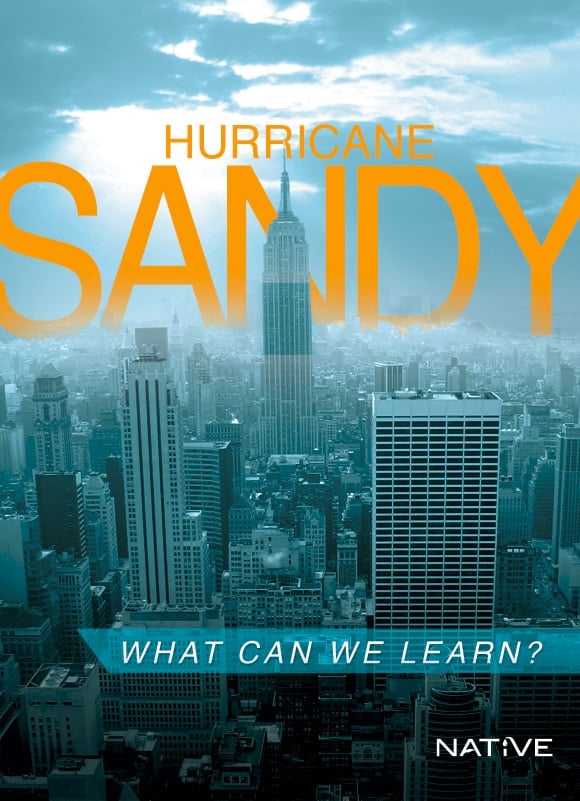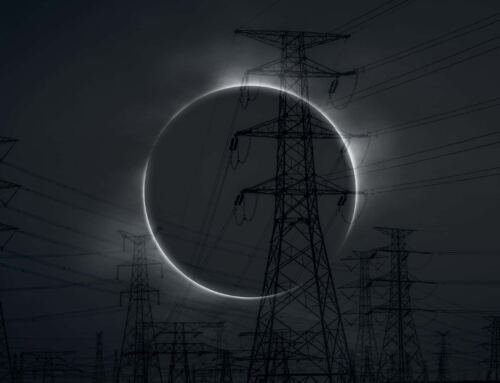Hurricane Sandy is but the tip of a rapidly melting iceberg. As climate change continues to wreak havoc on the nation, from record-breaking heat waves and droughts in the American midwest, to “Frankenstorms” menacing the eastern seaboard, Americans are learning to grapple with new climate realities. What can Hurricane Sandy tell us about the stormy years to come?
Climate Change Has Already Occurred
First and foremost, consensus in the scientific community has been and continues to be that global warming is the primary cause of worsening storms, more frequent storms, and more economically devastating storms. Scientists have been pointing out for decades that as global temperatures rise, so too does the temperature of the ocean. As we all know, warmer waters fuel more powerful storms.
As we also know, warm things tend to expand. As oceans expand and sea levels rise, coastal cities, in which a great percent of the world currently resides, will be subject to more and more flooding, intensified storm surges, and heavier precipitation. Simply put: it’s global warming, stupid.
Not a single credible and serious academic body denies that global warming is an extant phenomena that is negatively affecting the world today. 97 percent of scientists polled believed that anthropogenic climate change is real. Yet amazingly only about half of all Americans know something about global warming and believe it is anthropogenic. Most of us tend to treat climate change as a matter of opinion. To scientists, this is not a matter of opinion – it is a serious threat.
To the 60 million Americans currently feeling the wrath of Sandy, or the many millions more still coping with the record-breaking 2012 North American Drought, climate change has become a matter of life and death.
The Grid is a Liability
One thing in particular that Hurricane Sandy stripped away (besides million of roof shingles) is our acceptance of our nation’s decrepit and dangerously inadequate infrastructure – especially the national electrical grid.
The problem with the grid is centralization of power generation, and subsequent bottlenecks in distribution. That is why even one downed power line could leave entire neighborhoods in the dark, and also why a single botched maintenance operation in a substation could cause the largest blackout in California history. In the case of Hurricane Sandy, swamped infrastructure, downed transmission lines, and the explosion at the ConEd plant left Manhattan below 39th street entirely without power. At her height, 8.2 million Americans sat around in the dark twiddling their thumbs. In a nation where reliable electricity is absolutely vital, how can we continue to live at the mercy of an incredibly vulnerable centralized grid system?
We Must Learn From Where the Lights Stayed On
Even as the grid system failed all across the East Coast at the height of Hurricane Sandy, high speed wireless networks continued to function without interruption, providing citizens with key information lifelines, and, indeed, saving lives.
Americans, who were otherwise cut off from society due to a lack of power, were able to keep friends and family updated in real time, report downed power lines and other environmental hazards, and even help direct rescue workers to areas with pressing needs via battery-powered smart phones. In stark contrast to the nation’s archaic grid system, our data communications networks are actually incredibly resilient and reliable. Despite having nearly 25 percent of their cellphone towers knocked down during the storm, wireless carriers continued to provide service. They were able to reroute around damaged or bottlenecked systems and effectively self-heal. The grid could not, and that’s a huge problem.
Admittedly, transporting electrons is much more difficult than transporting data; however, the underlying architecture of information communication systems should be a blueprint for how we ought to be developing power distribution infrastructure. The internet is distributed; the grid is not. When extraordinary circumstances, or spikes in consumption, occur, the grid could potentially go down if it is not quickly backed up by peaker power plants. In fact, the grid is constantly teetering on the brink, waiting for a single downed tree limb, botched maintenance procedure, or an overload of demand to call it quits.
Distributive Generation
In contrast, residents with backup power systems weathered the storm exceptionally well. Communities, such as the world’s largest co-op in New York City, also had power before, during, and after the storm. Homes with a battery backup, usually as a part of a solar array, and NYC’s Coop City employ what is known as a distributive generation strategy where power is produced where it is consumed, effectively bypassing the weak links of the grid.
Distributed generation, combined with battery storage solutions, could greatly enhance the resilience of America’s energy architecture – against ever-worsening storms and unforeseeable adversities.

































Leave A Comment